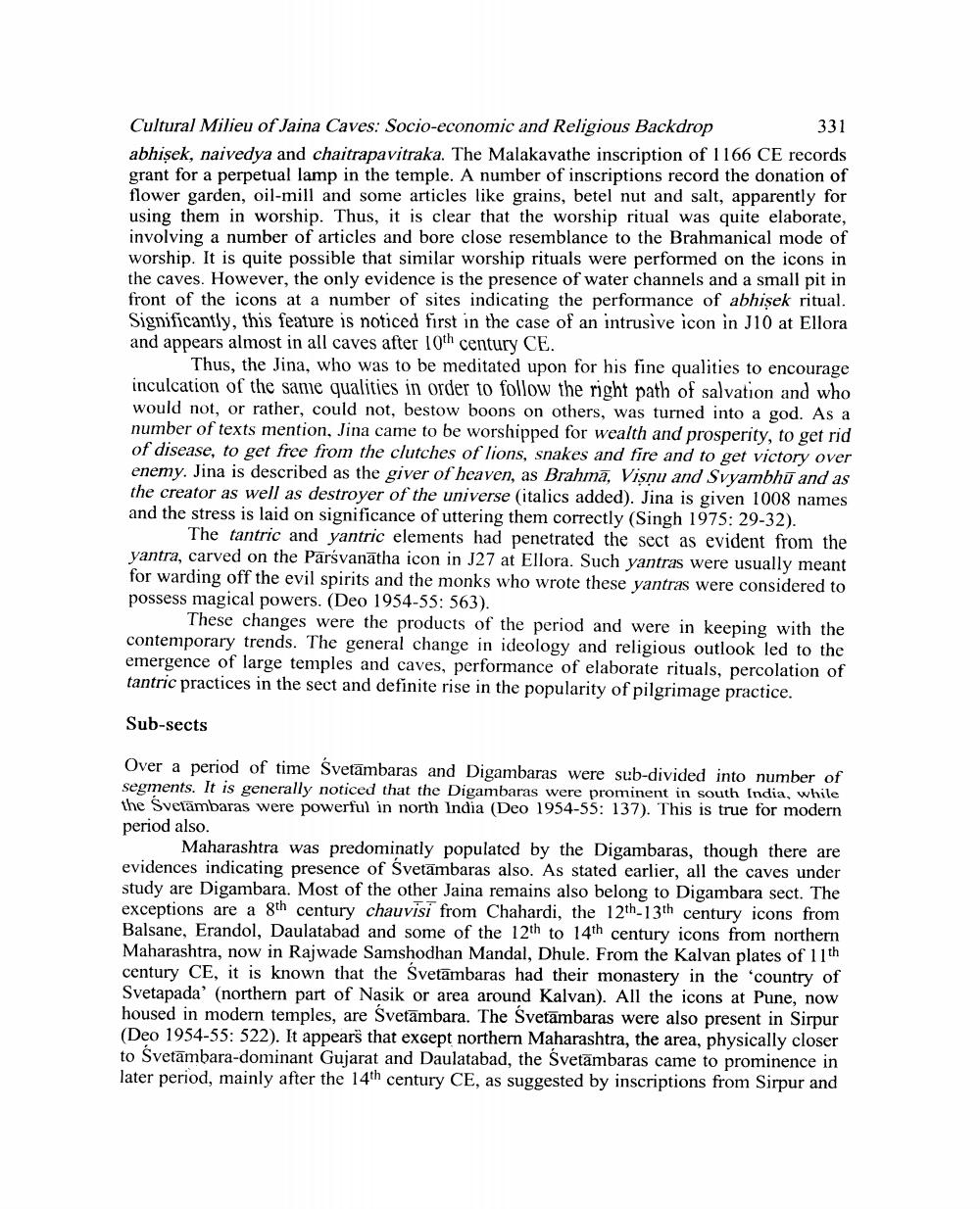________________
Cultural Milieu of Jaina Caves: Socio-economic and Religious Backdrop
331 abhişek, naivedya and chaitrapavitraka. The Malakavathe inscription of 1166 CE records grant for a perpetual lamp in the temple. A number of inscriptions record the donation of flower garden, oil-mill and some articles like grains, betel nut and salt, apparently for using them in worship. Thus, it is clear that the worship ritual was quite elaborate, involving a number of articles and bore close resemblance to the Brahmanical mode of worship. It is quite possible that similar worship rituals were performed on the icons in the caves. However, the only evidence is the presence of water channels and a small pit in front of the icons at a number of sites indicating the performance of abhişek ritual. Significantly, this feature is noticed first in the case of an intrusive icon in J10 at Ellora and appears almost in all caves after 10th century CE.
Thus, the Jina, who was to be meditated upon for his fine qualities to encourage inculcation of the same qualities in order to follow the right path of salvation and who would not, or rather, could not, bestow boons on others, was turned into a god. As a number of texts mention, Jina came to be worshipped for wealth and prosperity, to get rid of disease, to get free from the clutches of lions, snakes and fire and to get victory over enemy. Jina is described as the giver of heaven, as Brahma, Visnu and Svyambhū and as the creator as well as destroyer of the universe (italics added). Jina is given 1008 names and the stress is laid on significance of uttering them correctly (Singh 1975: 29-32).
The tantric and yantric elements had penetrated the sect as evident from the yantra, carved on the Parsvanātha icon in J27 at Ellora. Such yantras were usually meant for warding off the evil spirits and the monks who wrote these yantras were considered to possess magical powers. (Deo 1954-55: 563).
These changes were the products of the period and were in keeping with the contemporary trends. The general change in ideology and religious outlook led to the emergence of large temples and caves, performance of elaborate rituals, percolation of tantric practices in the sect and definite rise in the popularity of pilgrimage practice.
Sub-sects
Over a period of time Svetāmbaras and Digambaras were sub-divided into number of segments. It is generally noticed that the Digambaras were prominent in south India, while the Svetämbaras were powerful in north India (Deo 1954-55: 137). This is true for modern period also.
Maharashtra was predominatly populated by the Digambaras, though there are evidences indicating presence of Svetämbaras also. As stated earlier, all the caves under study are Digambara. Most of the other Jaina remains also belong to Digambara sect. The exceptions are a gth century chauvisi from Chahardi, the 12th-13th century icons from Balsane. Erandol. Daulatabad and some of the 12th to 14th century icons from northern Maharashtra, now in Rajwade Samshodhan Mandal, Dhule. From the Kalvan plates of 11th century CE, it is known that the Svetāmbaras had their monastery in the country of Svetapada' (northern part of Nasik or area around Kalvan). All the icons at Pune, now housed in modern temples, are Svetambara. The Svetambaras were also present in Sirpur (Deo 1954-55: 522). It appears that except northern Maharashtra, the area, physically closer to Svetāmbara-dominant Gujarat and Daulatabad, the Svetāmbaras came to prominence in later period, mainly after the 14th century CE, as suggested by inscriptions from Sirpur and




